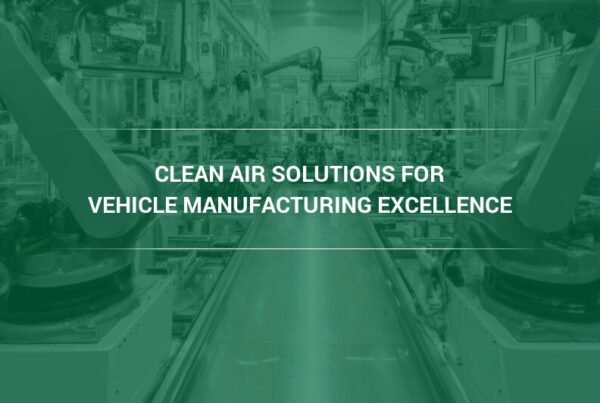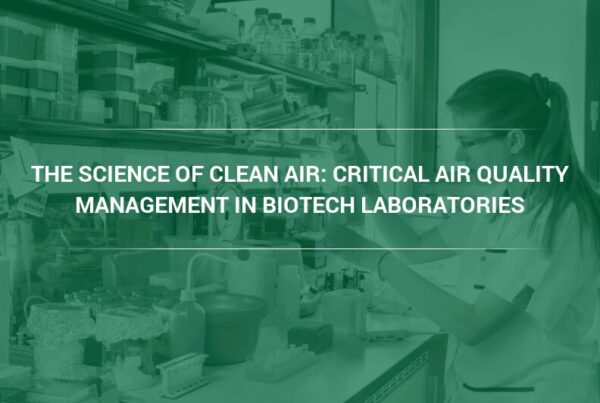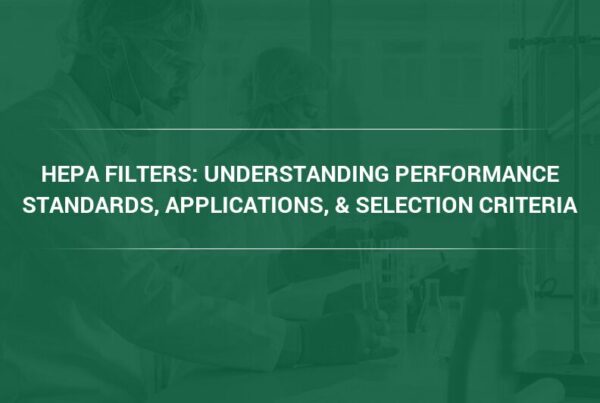The quality of air inside educational facilities directly impacts student health, attendance rates, and academic achievement. This comprehensive guide explores the unique air quality challenges schools face and the commercial HVAC filtration solutions that create healthier learning environments.
Why Indoor Air Quality in Schools Demands Special Attention
Schools represent one of our most challenging indoor environments from an air quality perspective. With high-density occupancy and students spending approximately 940 hours annually in these buildings, educational facilities face unique air quality challenges that require specialized solutions.
The Hidden Costs of Poor Indoor Air Quality
Many administrators don’t realize the financial impact of inadequate air filtration:
- Increased absenteeism: Schools lose between $7-15 per student per day in state funding when students miss school due to respiratory illnesses
- Staff absences: When teachers fall ill, schools must pay for substitutes, creating additional budget strain
- Reduced learning outcomes: Studies show direct correlations between air quality and cognitive performance
Research has revealed a troubling statistic: Approximately 11 million students (out of 50 million nationwide) attend schools with documented indoor air quality problems. This affects schools in every region, from Oklahoma to Minnesota, Colorado Springs to Birmingham.
Critical Areas Requiring Specialized Filtration
Not all school spaces have identical filtration needs. Here’s a breakdown of areas requiring special consideration:
Classrooms
The core learning environment often contains 30-35 students plus staff in a confined space. Human occupants can shed up to 500,000 particles (0.3 microns and larger) per minute, making these spaces significant sources of particulate contamination without proper filtration.
Common Areas & Hallways
Particle concentrations spike dramatically during class changes when hundreds of students move through hallways simultaneously. These transition periods create air quality challenges that require robust filtration solutions.
Cafeterias
These spaces face dual challenges: High-density occupancy during meal periods and food preparation odors distracting students and staff.
Physical Education Facilities
Locker rooms present unique air quality challenges due to increased humidity, biological particulates, and odors. These spaces often require specialized filtration approaches beyond what’s needed in standard classrooms.
Laboratories
Science classrooms where students handle chemicals like formaldehyde and glutaraldehyde require industrial-grade filtration to protect developing lungs from potentially harmful exposure.
Commercial HVAC Solutions for Educational Environments
The air quality standards for our children’s learning environments should be at least as high as those in professional workplaces. Industry experts recommend:
MERV 13A Filtration as the Baseline
For general school environments, MERV 13A filtration (as classified by the American Society of Heating, Refrigeration and Air Conditioning Engineers) provides the minimum level of protection against airborne contaminants while maintaining efficiency throughout the filter’s service life.
The A in the MERV 13A rating is particularly important because it ensures the filter maintains its efficiency over time—a critical factor in school environments where maintenance resources may be limited.
Carbon Air Filtration for Odor Control
For specialized areas like locker rooms, restrooms, and laboratories:
- Carbon filtration systems effectively remove bio-effluents and odors
- These systems help maintain comfortable environments that promote learning
- They’re especially effective in areas with cleaning supplies or laboratory chemicals
HEPA Filtration for Specialized Spaces
For science laboratories and other sensitive environments:
- HEPA (high-efficiency particulate air) filtration removes a minimum of 99.97% of particles 0.3 microns in diameter
- This industrial-grade filtration protects students from potential exposure to harmful chemicals
- Combined with molecular filtration, HEPA systems create laboratory environments that minimize risk to occupants.
The Economic Case for Improved Air Filtration
While upgrading air filters requires an initial investment, the financial benefits quickly become apparent:
- Reduced energy costs: Modern, efficient filters can reduce the need for expensive ventilation air
- Decreased maintenance expenses: High-quality filters often require less frequent replacement
- Improved attendance funding: Fewer illness-related absences translate directly to improved state funding
Schools in climate-extreme locations like Phoenix, Minneapolis, or Houston particularly benefit from effective filtration that reduces the need to bring in outside air that must be heated or cooled.
Implementation Strategies across Different Regions
The optimal approach to school air filtration varies based on regional factors:
Southern and Southwestern Regions
Schools in Dallas, Houston, Phoenix, and similar climates face challenges from extended cooling seasons and, in some areas, high ambient dust levels. These facilities mainly benefit from:
- High-efficiency filtration to reduce cooling loads
- Robust pre-filtration systems to handle dust and pollen
- Filters designed for high-humidity performance in coastal areas
Northern and Midwestern Regions
Educational facilities in Minneapolis, Kalamazoo, and similar locations contend with extended heating seasons and seasonal allergen concerns. Key considerations include:
- Heat-recovery systems paired with efficient filtration
- Solutions addressing seasonal pollen and mold spores
- Winter-optimized systems that maintain efficiency during cold-weather months
Urban Centers
Schools and other major metropolitan areas face additional challenges from ambient air pollution. These facilities need:
- Multi-stage filtration addressing both particulate and gaseous pollutants
- Systems designed to handle traffic-related emissions
- Solutions that address both indoor and outdoor contaminant sources
Key Takeaways: Engineering Better School Environments
Looking at this from an engineering perspective, the data clearly shows that proper commercial and industrial-grade HVAC filtration in schools isn’t merely addressing a health concern—it’s solving multiple system-level problems simultaneously. The particle loading in classrooms with 30+ occupants creates a substantial burden that requires appropriate mitigation strategies.
When we analyze the performance metrics of schools implementing proper air filtration systems, the results are consistently measurable across different parameters. Districts from Sacramento to Syracuse and Austin to Nashville report significant reductions in absenteeism and energy consumption after upgrading to MERV 13A or better filtration combined with appropriately designed air handling systems.
From a technical standpoint, the most critical factor is maintaining filter efficiency over the operational lifespan. Many conventional filters show excellent initial efficiency but experience substantial degradation within weeks under typical school conditions. This efficiency curve is precisely why the “A” designation in the MERV 13A rating is non-negotiable for school applications—it ensures sustained performance under challenging conditions.
The cost-benefit analysis is straightforward when you factor in reduced energy consumption, decreased maintenance requirements, and the quantifiable financial benefits of improved attendance. The ROI calculation typically shows payback periods of 12-24 months for most facilities, making advanced filtration one of the most technically sound and fiscally responsible improvements schools can implement.
For more information about commercial HVAC filtration solutions for educational facilities in your area, contact your local Camfil representative for a consultation tailored to your regional needs and facility requirements.



